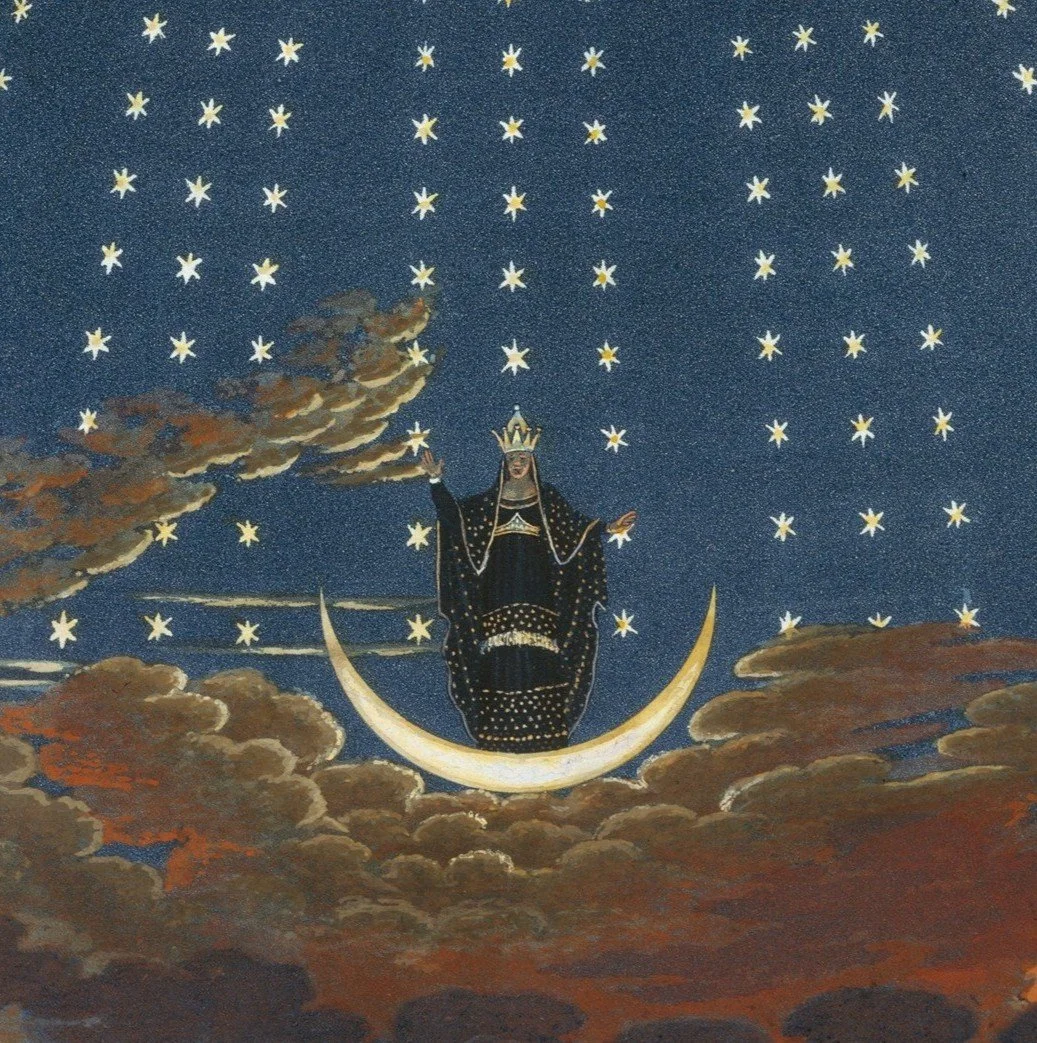Day 4 - The Nature and Lore of Ritual Magic
We’re now on day four of the challenge, and your assignment is to do the ritual again, while giving offerings again. But I won’t be adding another layer today – I want everything you’ve learned thus far to integrate and percolate without throwing anything else on top.
Take this as an opportunity to catch up, gather more materials, or procure some offerings if you weren’t able to do so yesterday.
As you continue with your Jupiter magic, I want to use this day to share a little more information about this tradition and the nature of the practice we’re engaging in.
First: what exactly is ritual magic?
Ritual magic is a school of the arcane arts that utilizes ceremony to manifest a specific outcome. Most often, this happens through contacting a deity or spirit who can help.
At the heart of ritual magic is simply setting aside a time to reach out and ask for help. Any time you’ve prayed to your guides or to God asking for help or guidance, that’s ritual!
But there are ways that mages and spiritual seekers can supercharge requests and calls for help in order to make them more powerful and effective.
Rituals in this tradition will often utilize incense, a candle, and objects associated with the deity you are wishing to contact, as we discussed at the beginning of this challenge.
They can also include chanting, complex liturgies and recitations, physical movements, mudras, choreographed steps, and more.
Rituals can be simpler like the one we’re covering here, or extremely elaborate affairs spanning several days.
In a nutshell, think of this kind of ritual magic as a prayer or intention-setting ceremony with more “oomph” behind it.
Traditionally, these kinds of rituals were a part of keeping good relations between the spirit world and human world. As we covered in the last lesson, the offerings of these rituals creates a reciprocal exchange of energy that benefits everyone involved.
There are many different deities, spirits, and sources of energy that magicians can tap into in order to fuel their spellwork and ritual.
One of the most effective and widely used is the power of planets and stars, which we are working with here. The planets and stars, as well as their attendant deities and spirits are reliable, safe to work with, and very supportive of humanity.
The tradition of working with the powers of the planets and stars is called astrological magic. Its first recorded use is around 3100 B.C., but its actual practice by humanity is far older.
This was one of the central practices within the western esoteric tradition. Many of the mainstay lineages of spiritual practice in the west – Hermeticism, Rosicrucianism, Kabbalah, and more – heavily prioritize working with celestial forces like this. But astrological magic like this is also practiced by Vedic Astrologers, and many sects of Daoist mages in China.
Today, there are many versions of astrological magic as we are practicing it within the western tradition. The kind we are practicing here - setting up an altar with physical materials and offerings - is by far the oldest. It is explicitly referenced in an ancient dialogue between Hermes Trismegistus (a very important founding figure in this lineage) and his student Aesclepius.
I hope that this background and history is helpful for situating your practice within a greater context. I majored in philosophy and classics in college, so I could talk about these kinds of things all day!
The main thing to understand is that this wasn’t just made up in the last 50 years by innovative hippies. You’re working within a longstanding lineage with historical integrity.
Nor is this a witchy spin-off of rote hackneyed truisms from The Secret. This magic is old - very old.
Tomorrow, I’ll introduce another layer to you for this ritual. So make sure to do the ritual again today, and do whatever you need to do to catch up if necessary.
This time, do the ritual knowing that you are taking part in a real lineage, one that hums with an ancient current that will happily welcome your presence.
Merlin
